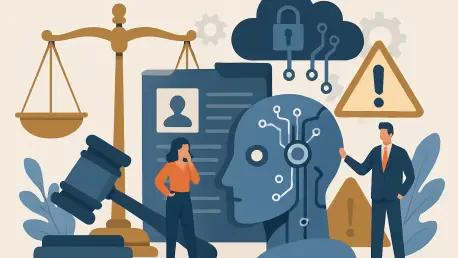Large Language Models (LLMs) are powerful assets in the field of AI, providing vast opportunities in text processing and generation. However, as their adoption grows, so do concerns over legal challenges arising from opaque training data. This market analysis dissects the shifting dynamics influencing LLMs, offering insights into the legal landscape these models navigate and the solutions emerging to counteract risks.
Evolution and Context within AI Legal Challenges
The significance of LLMs is evident in their rapid advancement from foundational natural language processing techniques to present-day game-changers in AI capabilities. Their evolution is tied closely to leaps in computational capacity and massive datasets, showcasing their indispensability in today’s technology-driven environments. Understanding these models’ historical context reveals how they have shaped both technological growth and the development of legal frameworks, setting the stage for both opportunities and contentious legal disputes.
Key Market Trends and Legal Implications
Data Transparency Challenges and Intellectual Property Dilemmas
Central to the LLM market’s legal hurdles is the lack of transparency in data origins used for training. Major players in AI, including OpenAI and Google, procure vast datasets with ambiguous provenance, raising potential intellectual property conflicts. This opacity leads to legal risks as underlying datasets may inadvertently incorporate copyrighted or proprietary information. Consequently, organizations using these LLMs face possible infringement suits, highlighting the need for stringent data sourcing practices.
The Rise of Ethically-Sourced LLMs
In response, the industry is witnessing a shift toward ethically-trained AI models utilizing open-source or public domain data. Projects like the ‘Common Pile’ represent a collective effort to navigate legal pitfalls by ensuring all data is thoroughly vetted. Although these models initially face performance challenges, they promise reduced legal disputes, exemplifying a sustainable path forward in AI innovation. This trend marks a substantial pivot in the industry, emphasizing legal compliance and ethical responsibility.
Regional Considerations in Regulatory Environments
The legal complexities of LLM deployment vary significantly across regions, creating a fragmented regulatory landscape. AI-powered innovations often surpass existing legal systems, causing inconsistencies in how they are governed globally. Businesses must consider these regional disparities, as overlooking the intricacies of local intellectual property laws and compliance regulations can lead to severe legal repercussions. Hence, staying attuned to the varied international legal standards becomes critical for global organizations leveraging LLMs.
Strategic Insights and Market Projections
The Increasing Pressure for Transparent AI
As AI’s transformative potential continues to expand, demands for transparency and responsible data usage are rising. Future legal frameworks are expected to include stricter regulations ensuring ethical AI model training, potentially standardizing data sourcing practices across the industry. This trend indicates a future where transparency is not just preferable but mandated, reshaping how AI systems are developed and deployed.
Legal Safeguards and Risk Mitigation Strategies
To mitigate legal exposures, businesses should adopt models with verified data lineage and engage with vendors offering comprehensive indemnification clauses. Establishing robust internal legal expertise and maintaining awareness of emerging legislative trends are crucial components of a successful risk management strategy. Such proactive measures allow companies to take advantage of LLMs while minimizing potential liabilities that could otherwise impede innovation.
Reflecting on Findings and Future Directions
In retrospect, the LLM market displayed a dual challenge of innovation versus compliance. As AI technologies matured, aligning inventive ambitions with solid legal and ethical standards became imperative. Organizations focused not only on harnessing the technological potential of LLMs but also on evolving their operational strategies to include legal vigilance. Significant progress was made toward ensuring that AI development remained within the bounds of regulatory frameworks, paving the way for legally compliant innovation.
In conclusion, looking forward, the industry should prioritize integrated strategies that consider both cutting-edge AI advancements and strict adherence to evolving legal standards. Emphasizing ethical training practices, transparent data usage, and regional compliance allows enterprises to effectively navigate the complex legal labyrinth while capitalizing on the boundless opportunities LLMs present.









